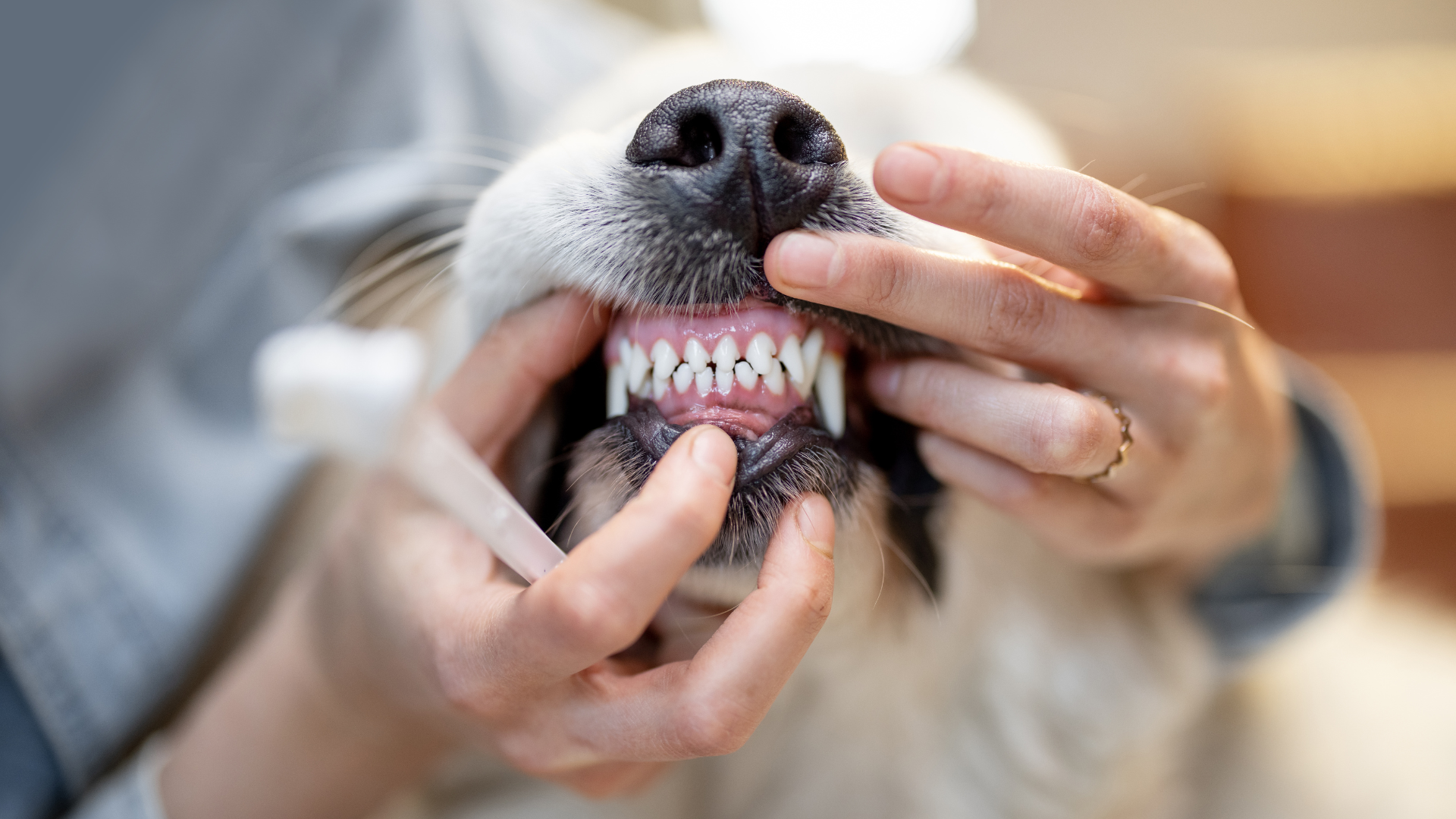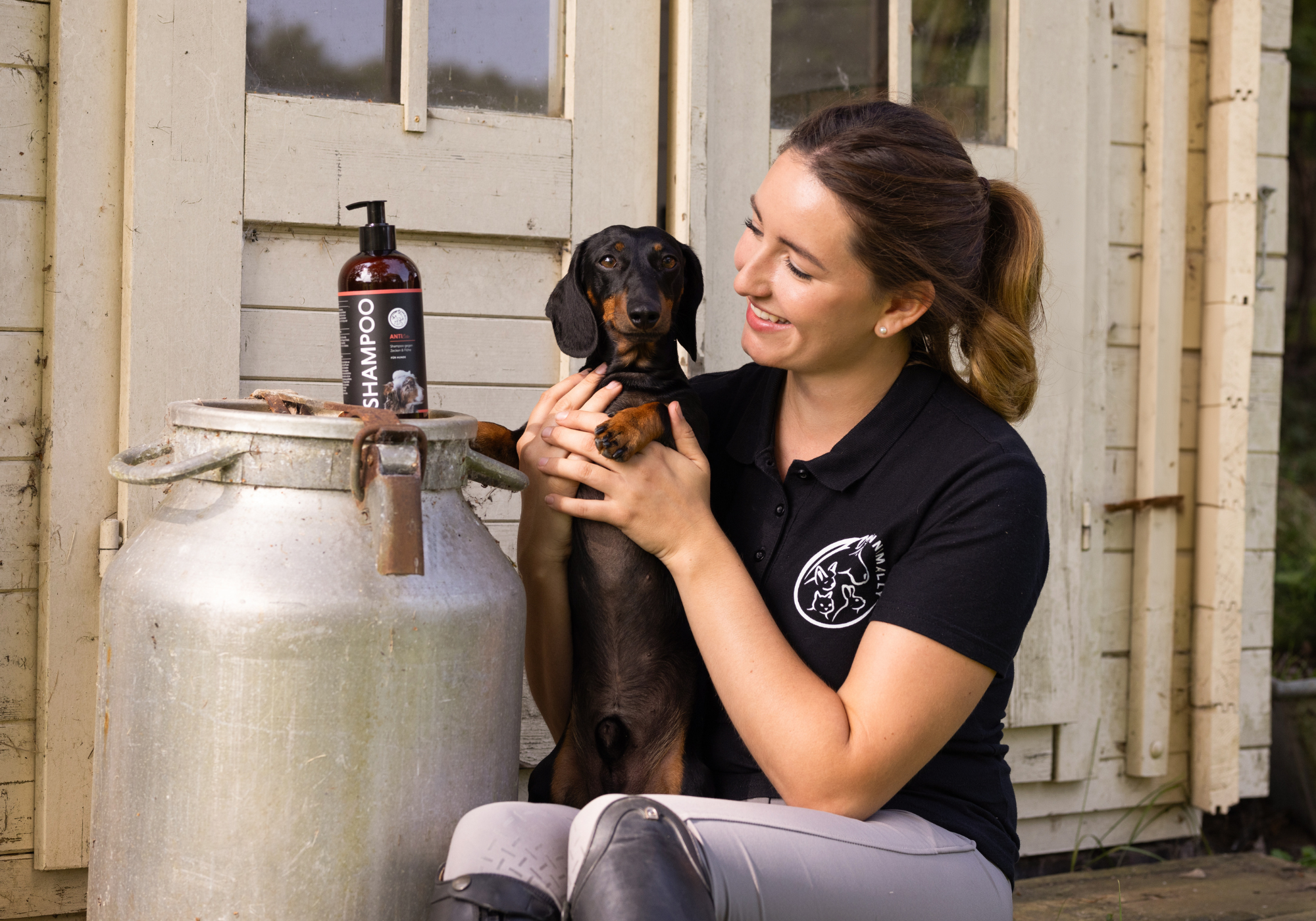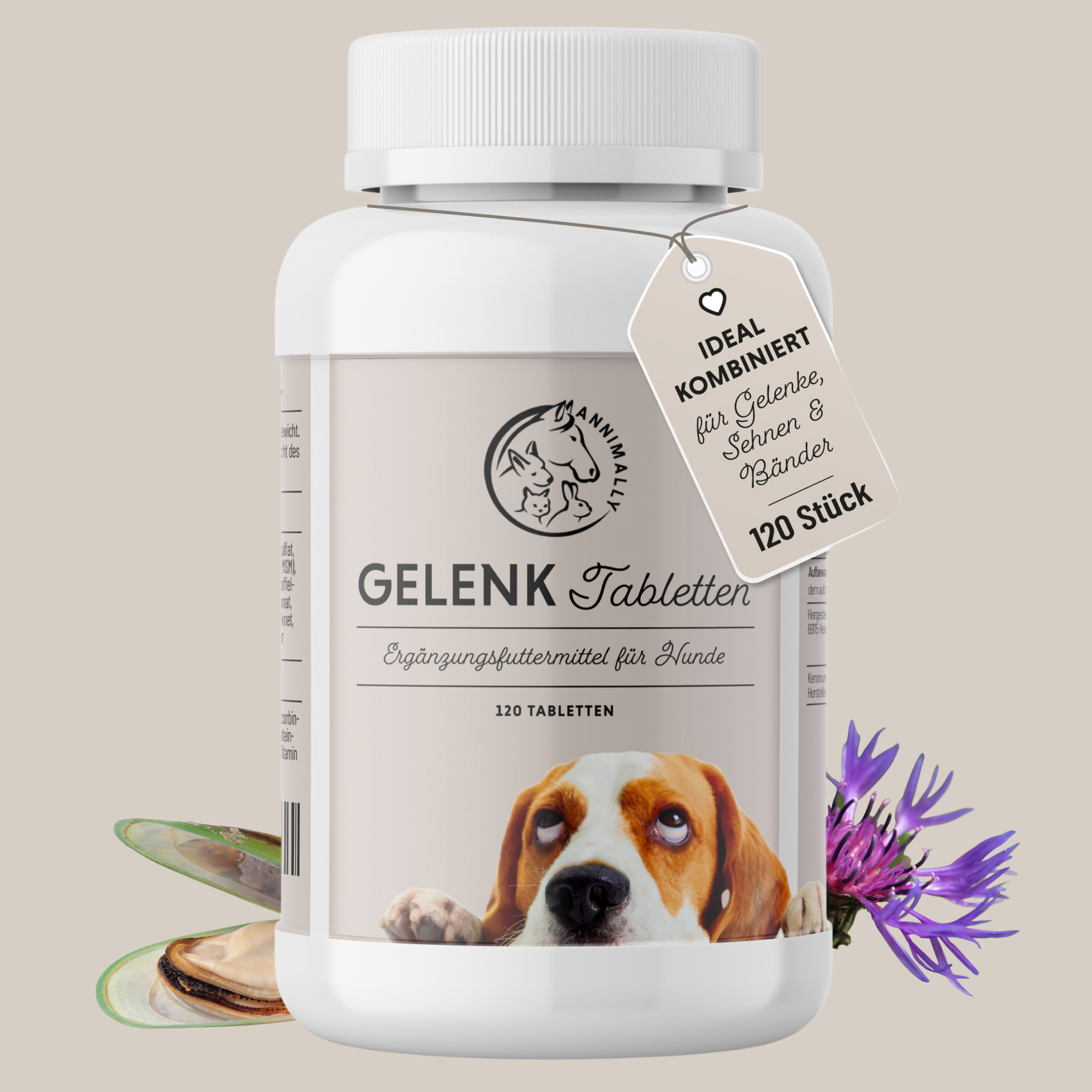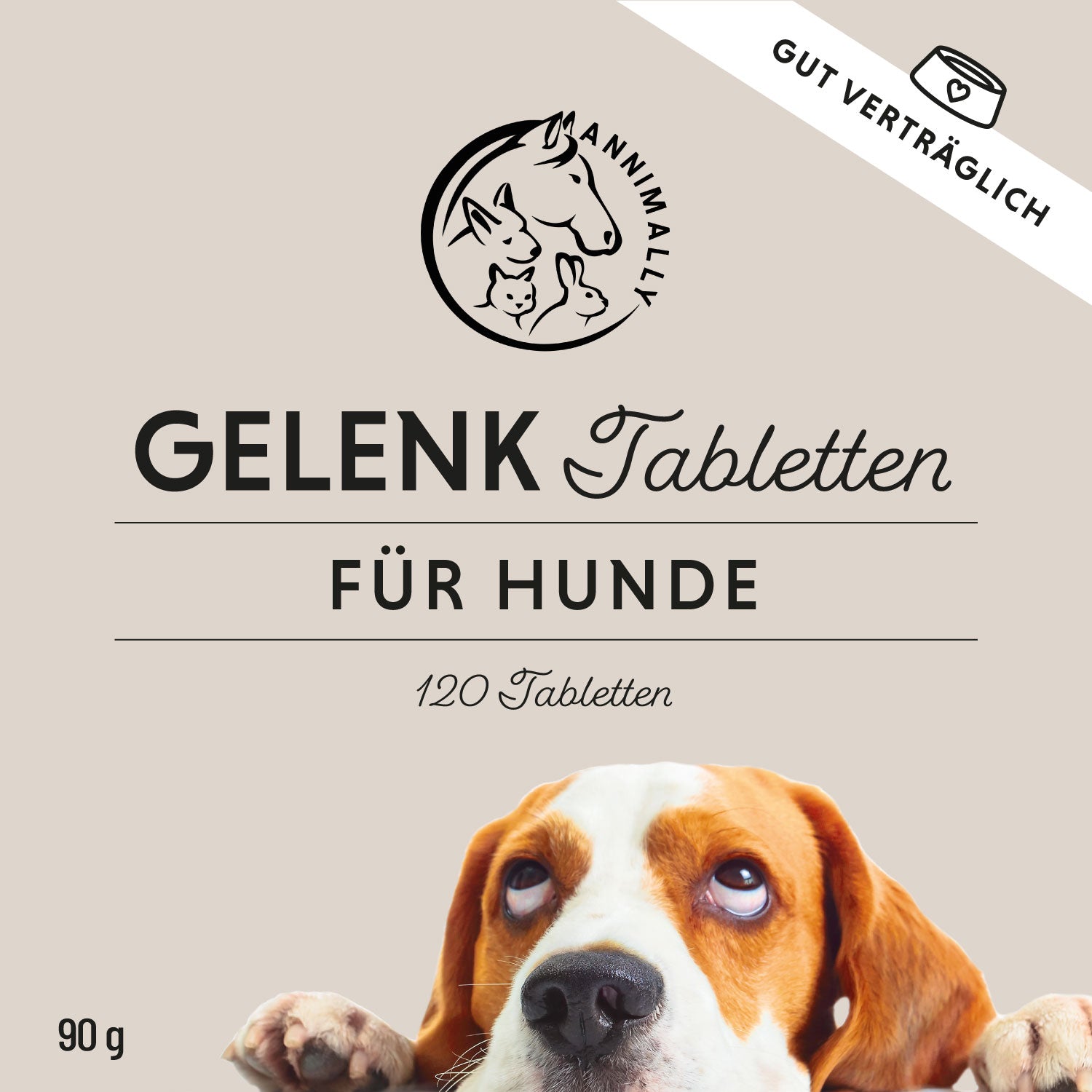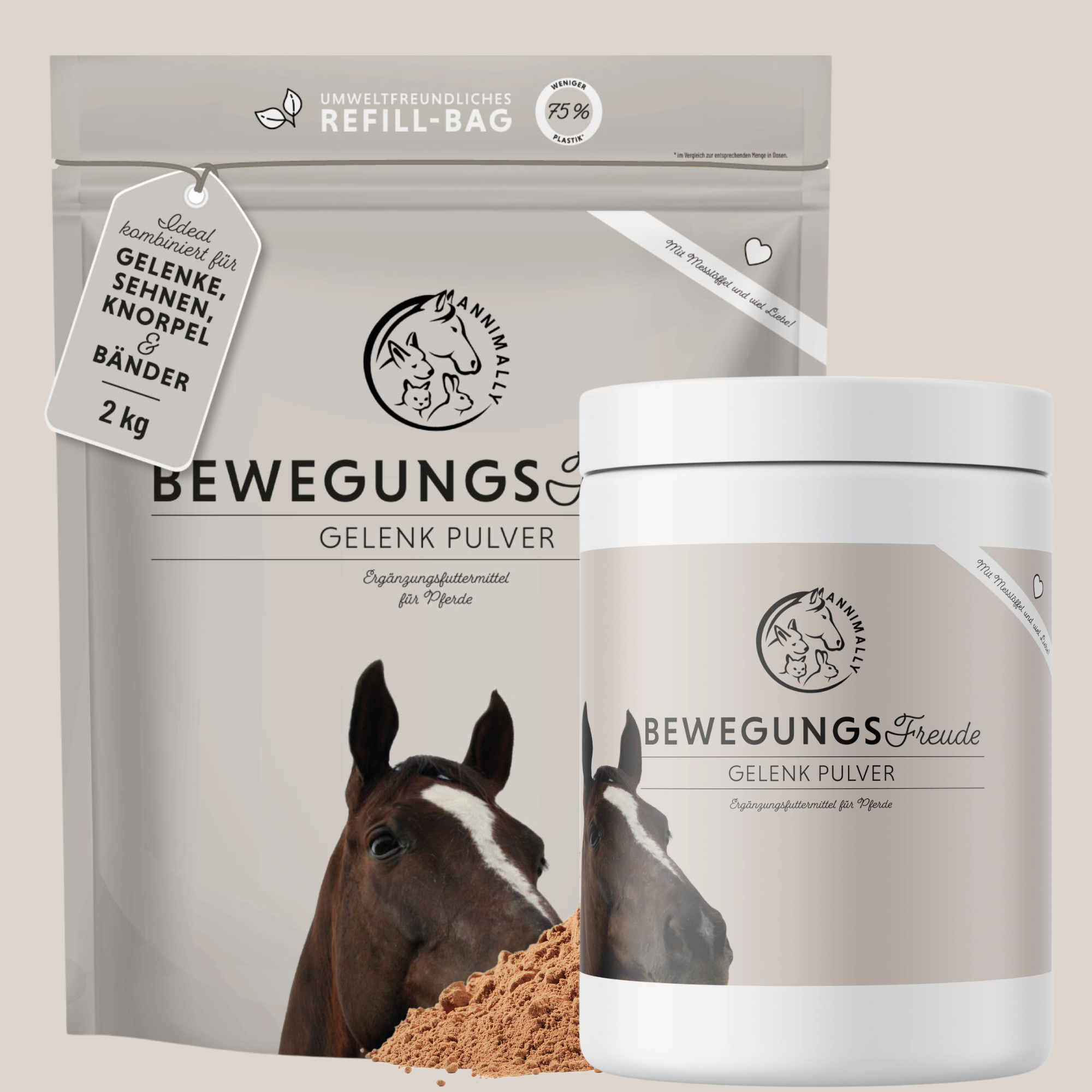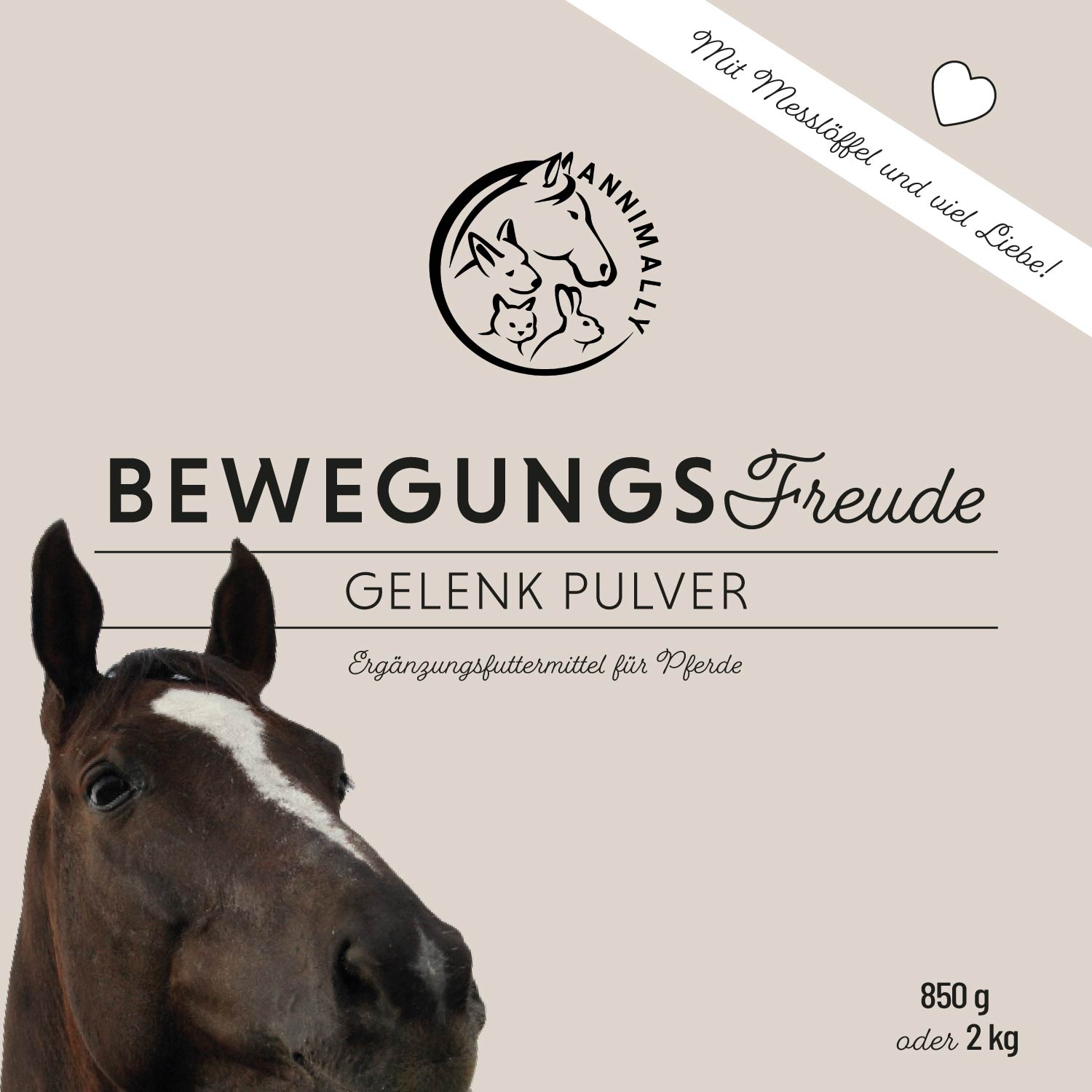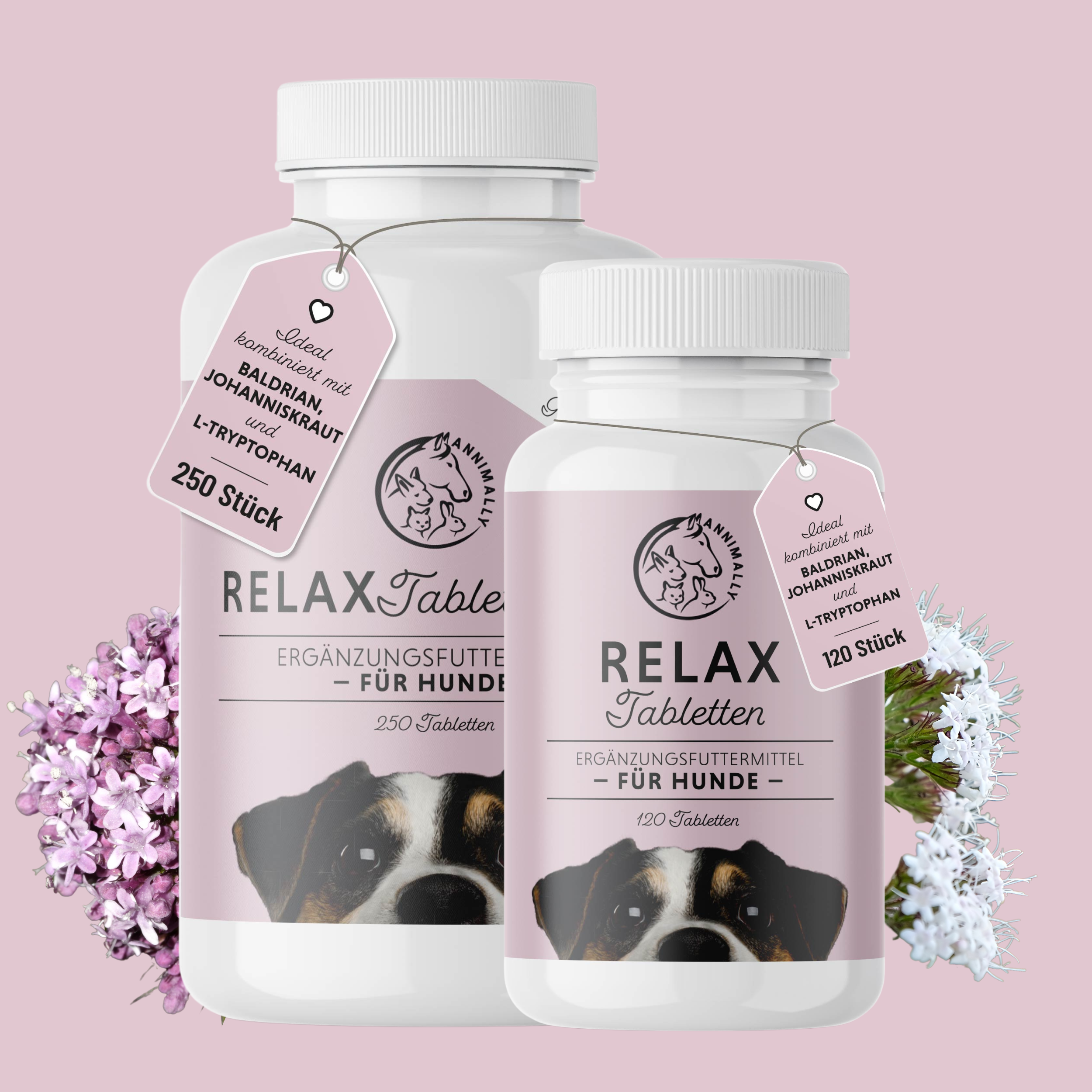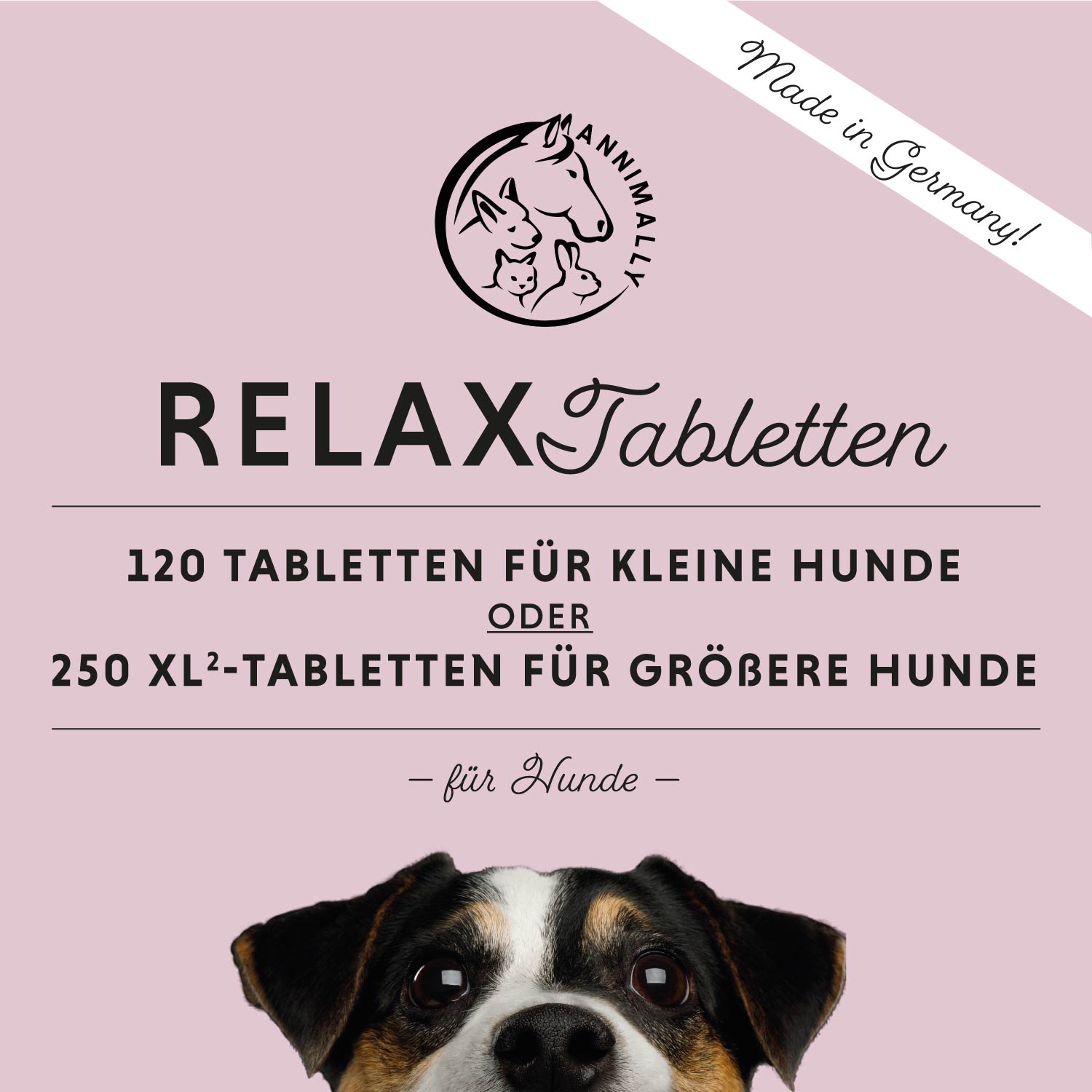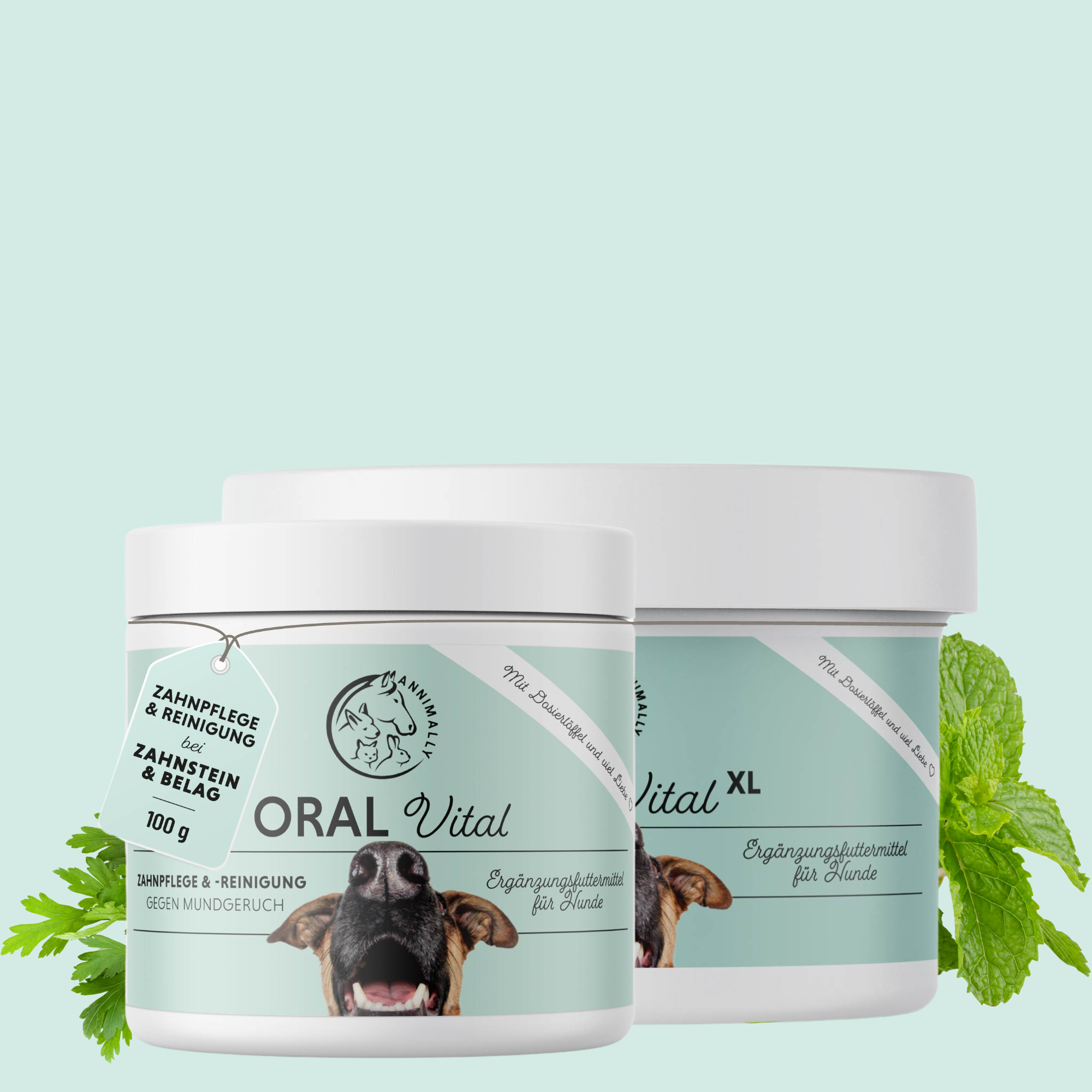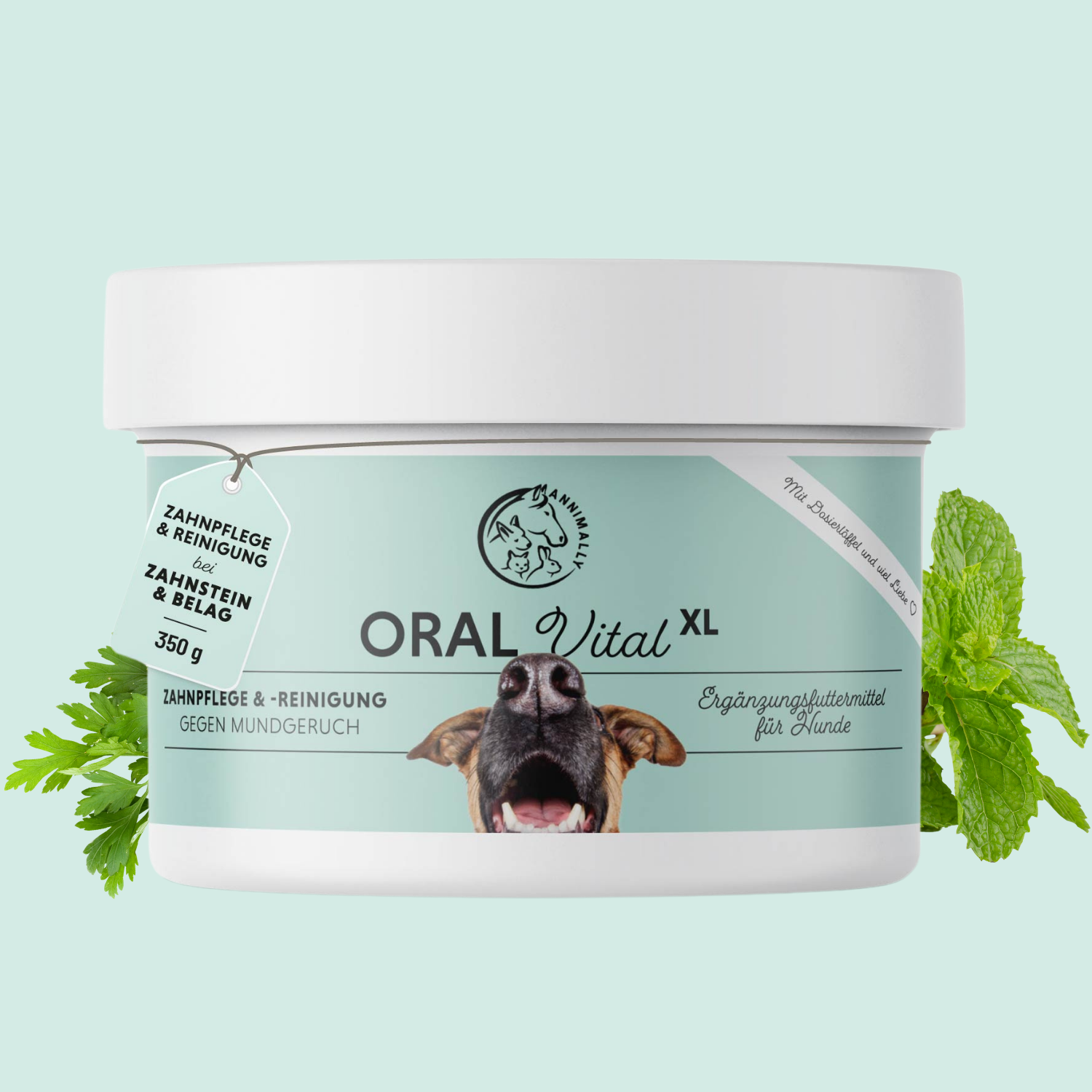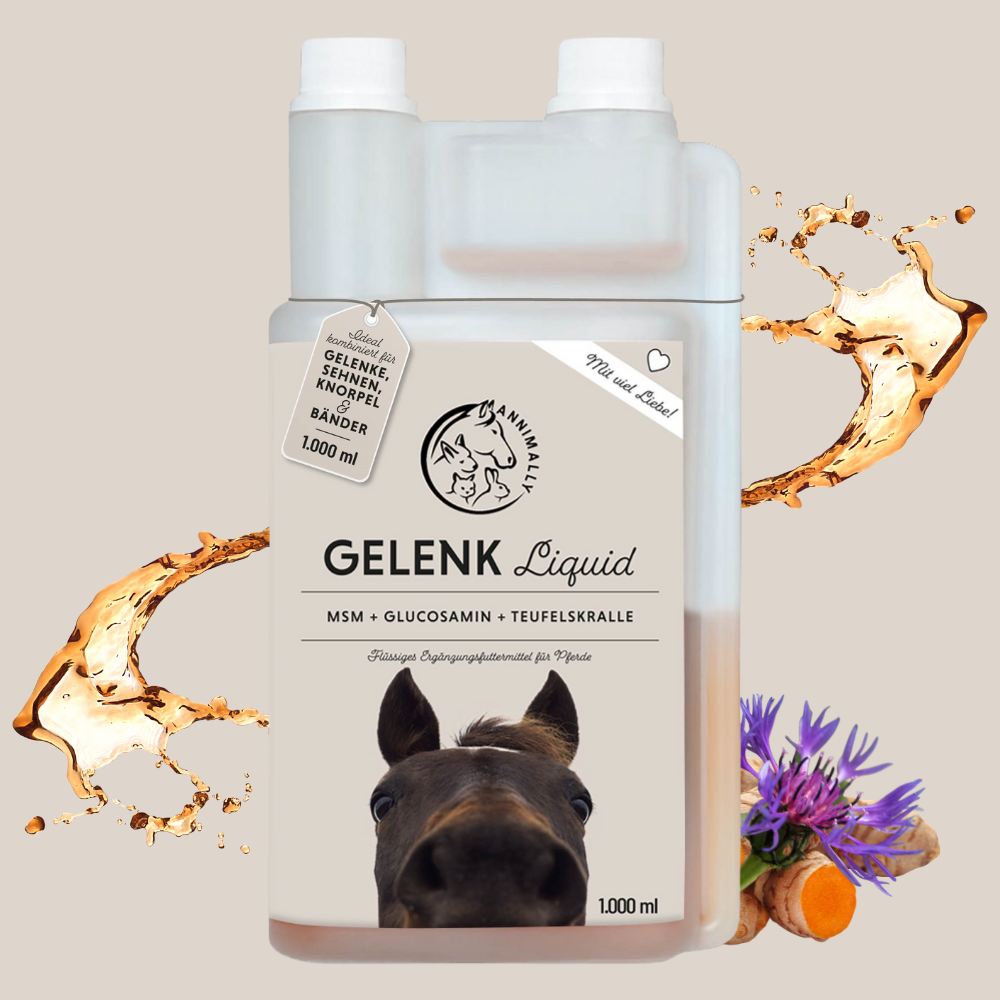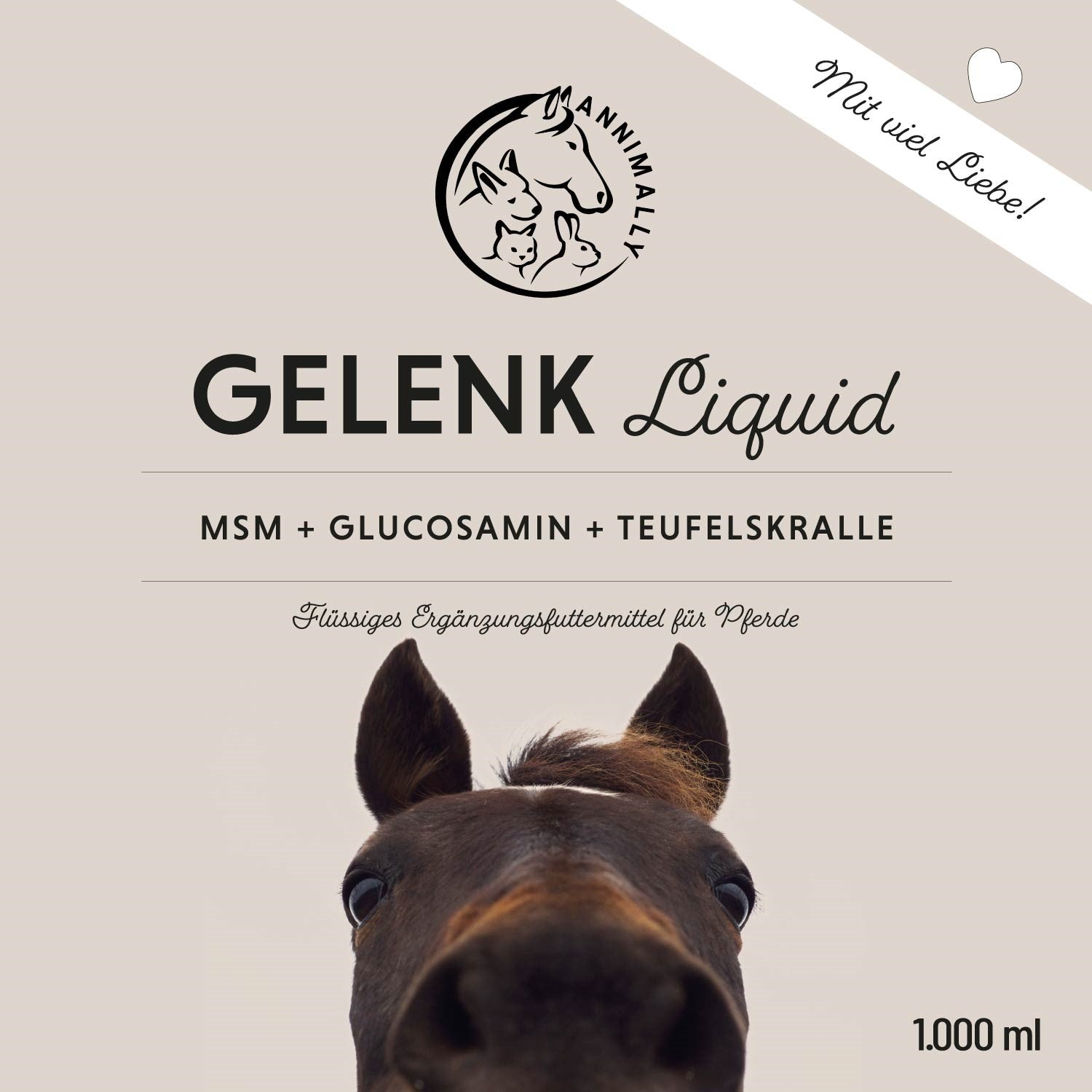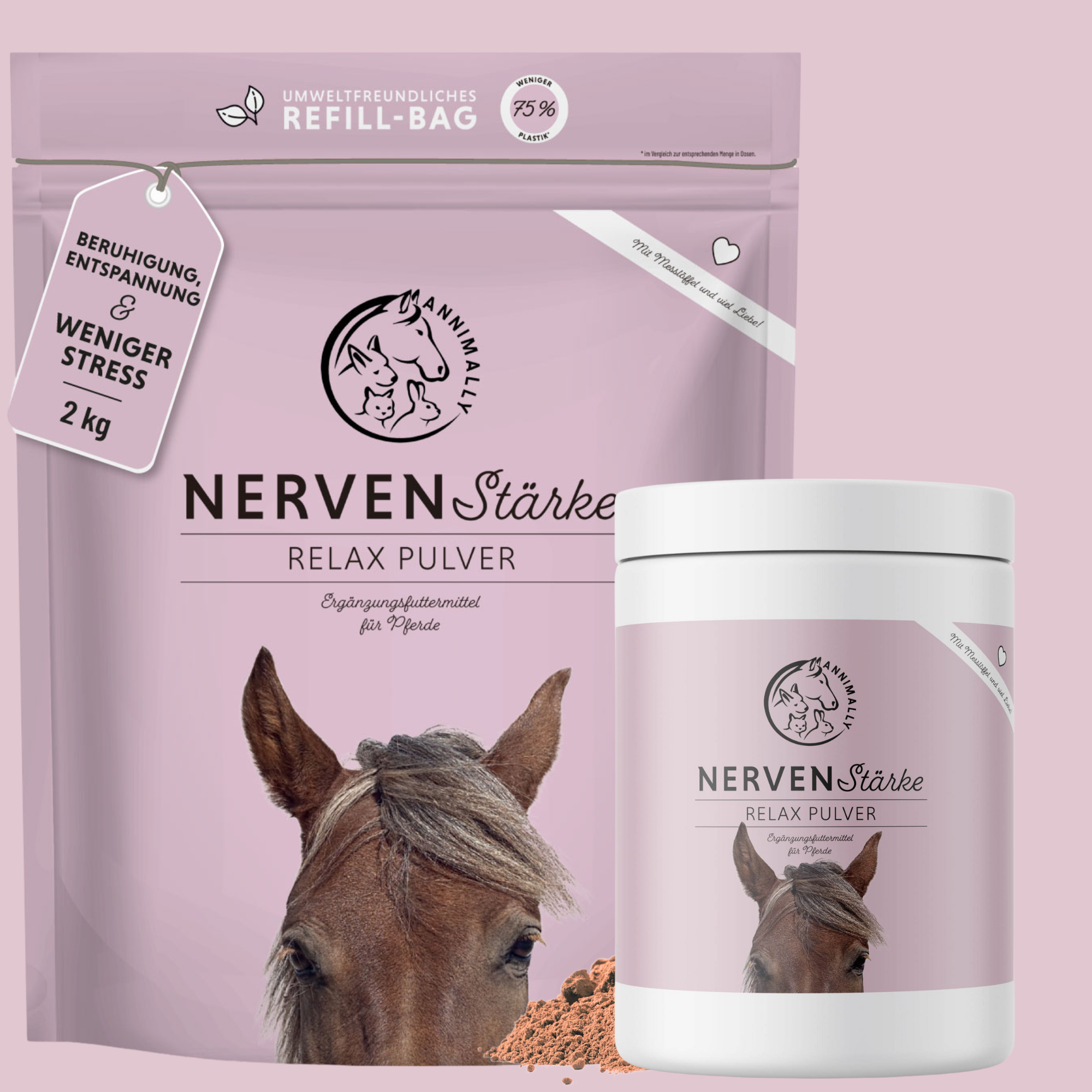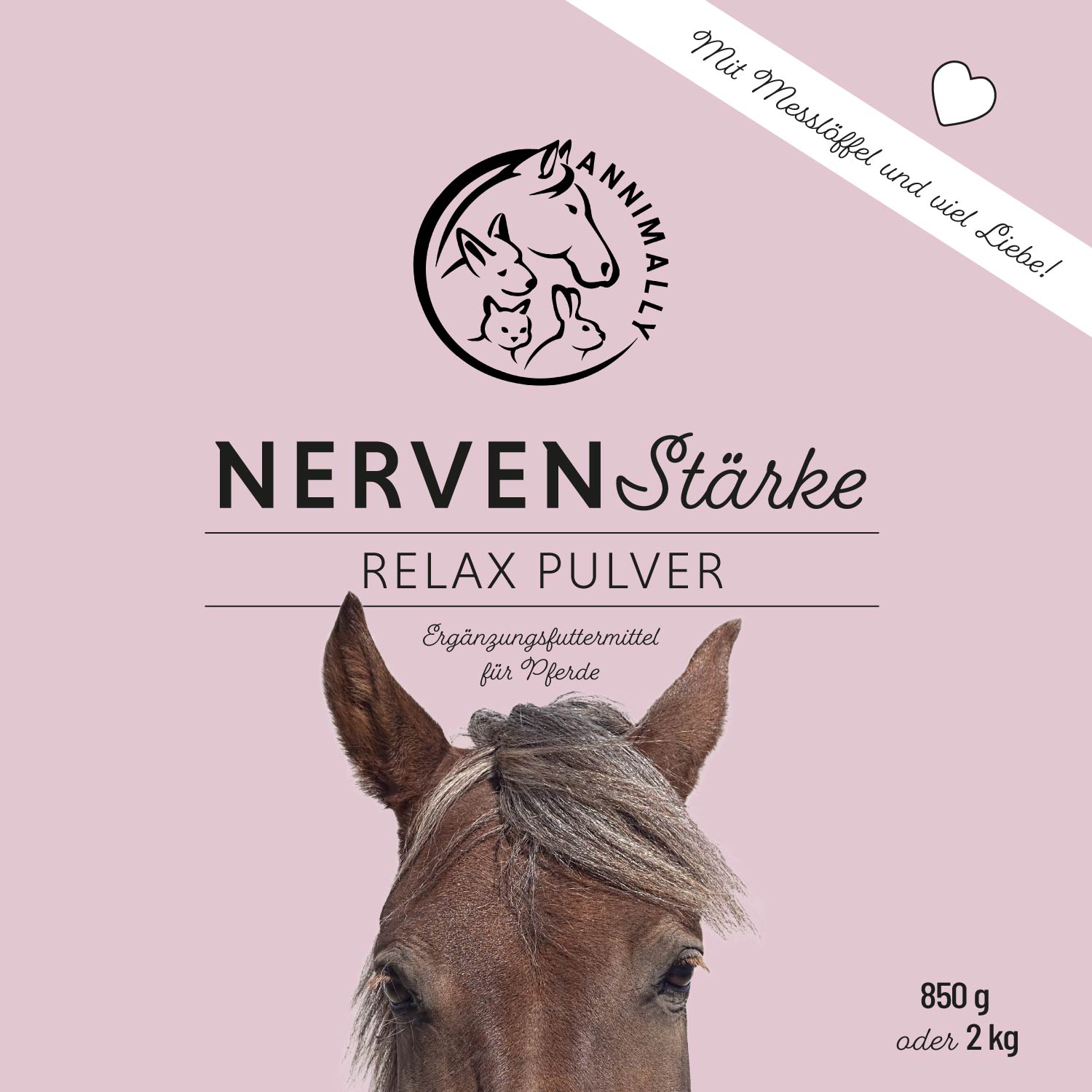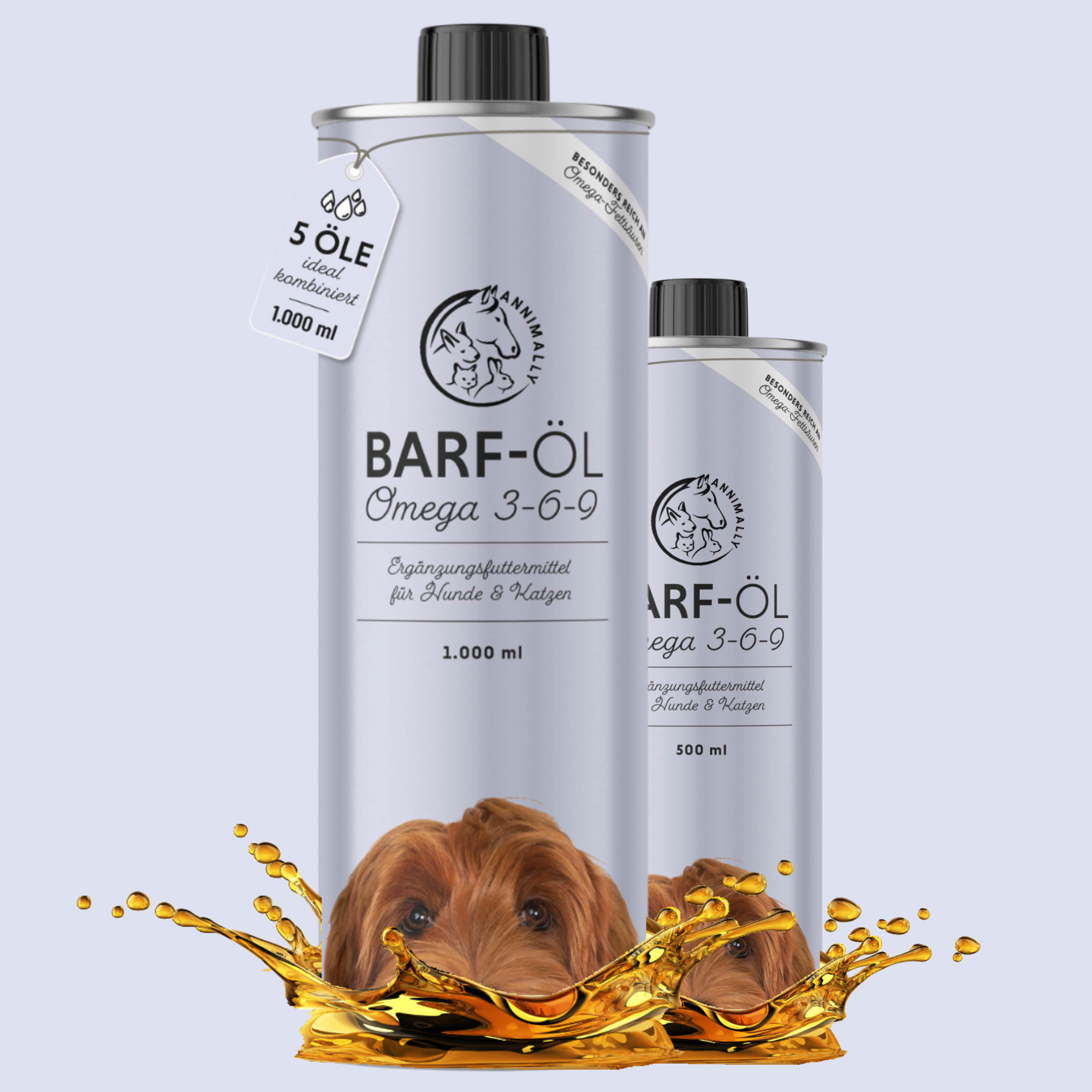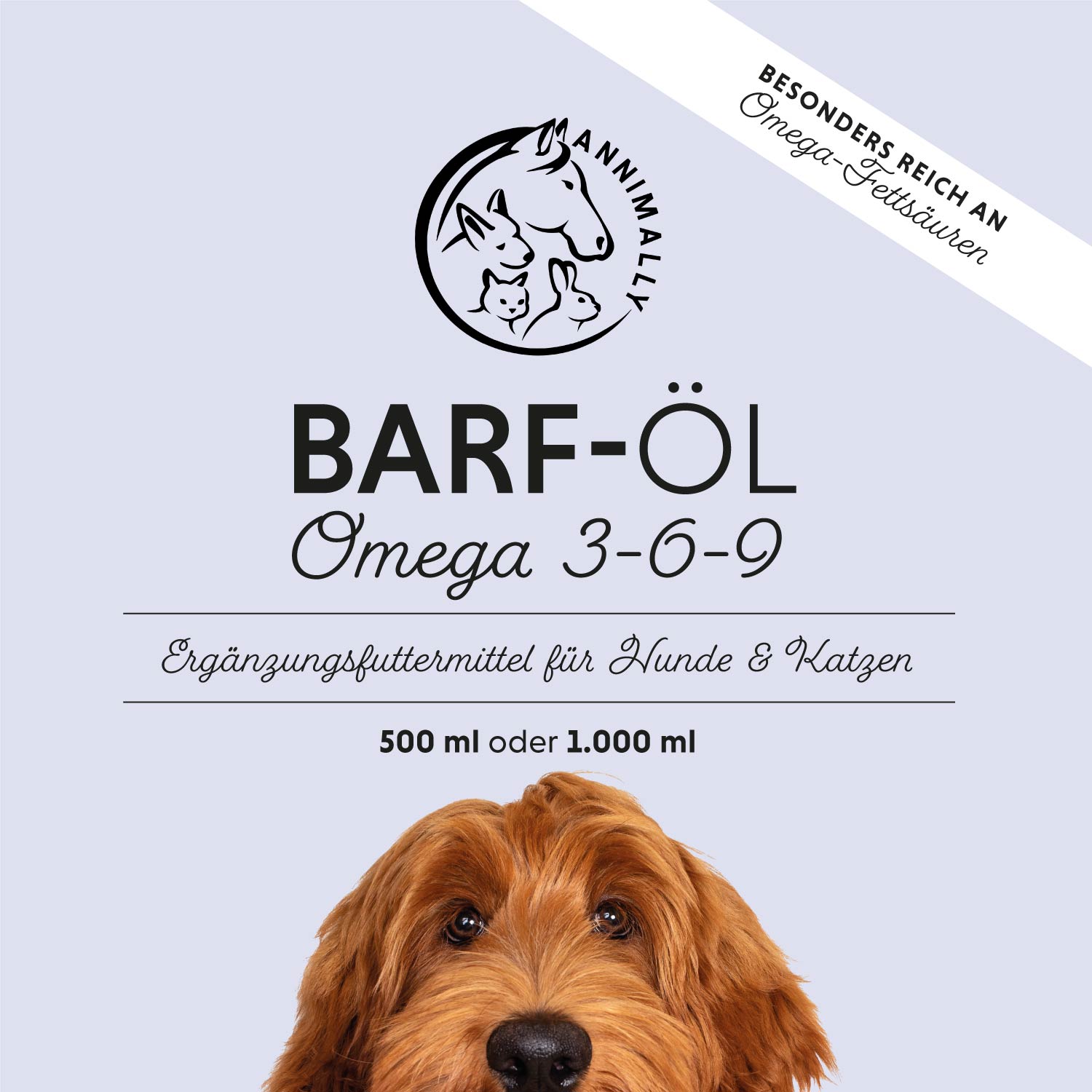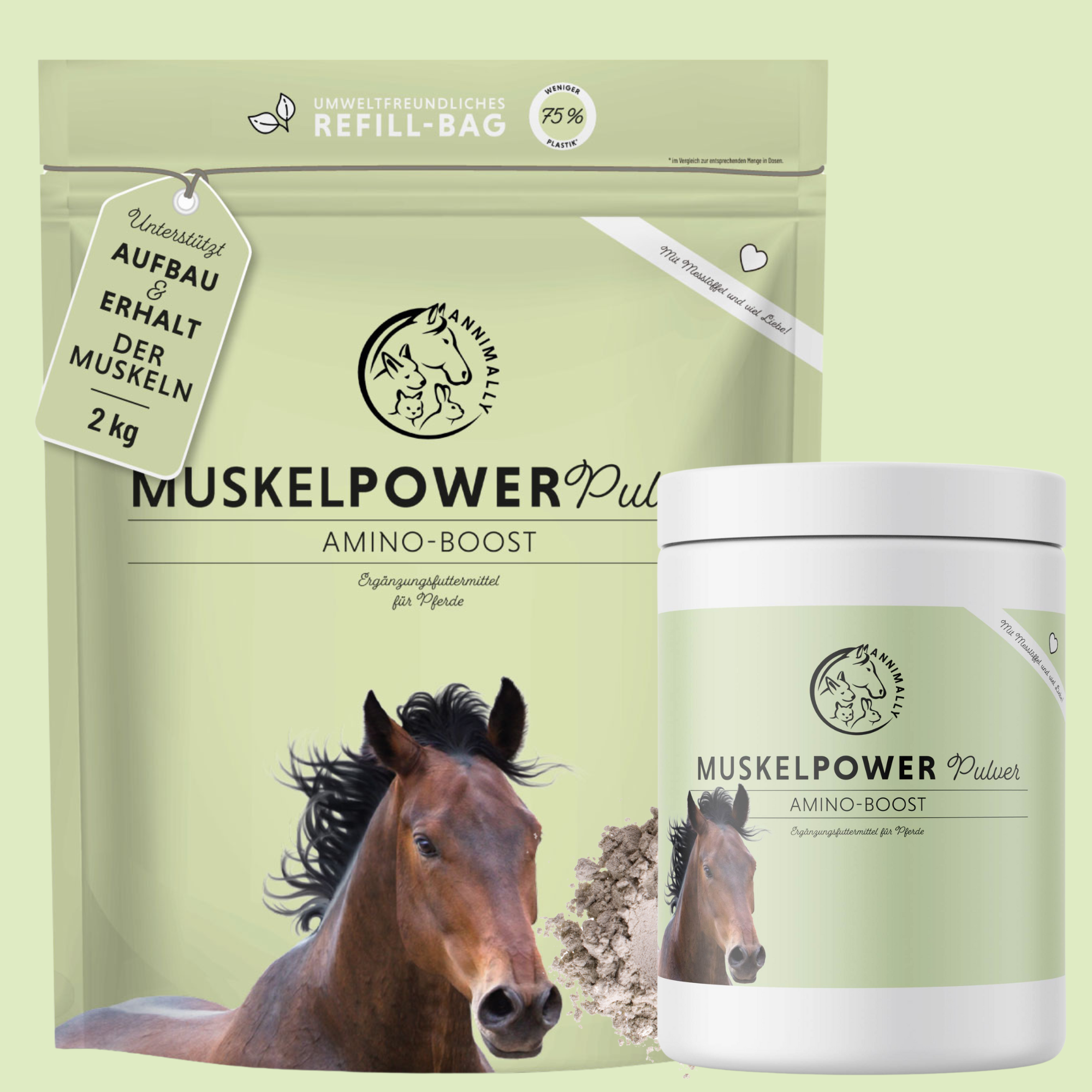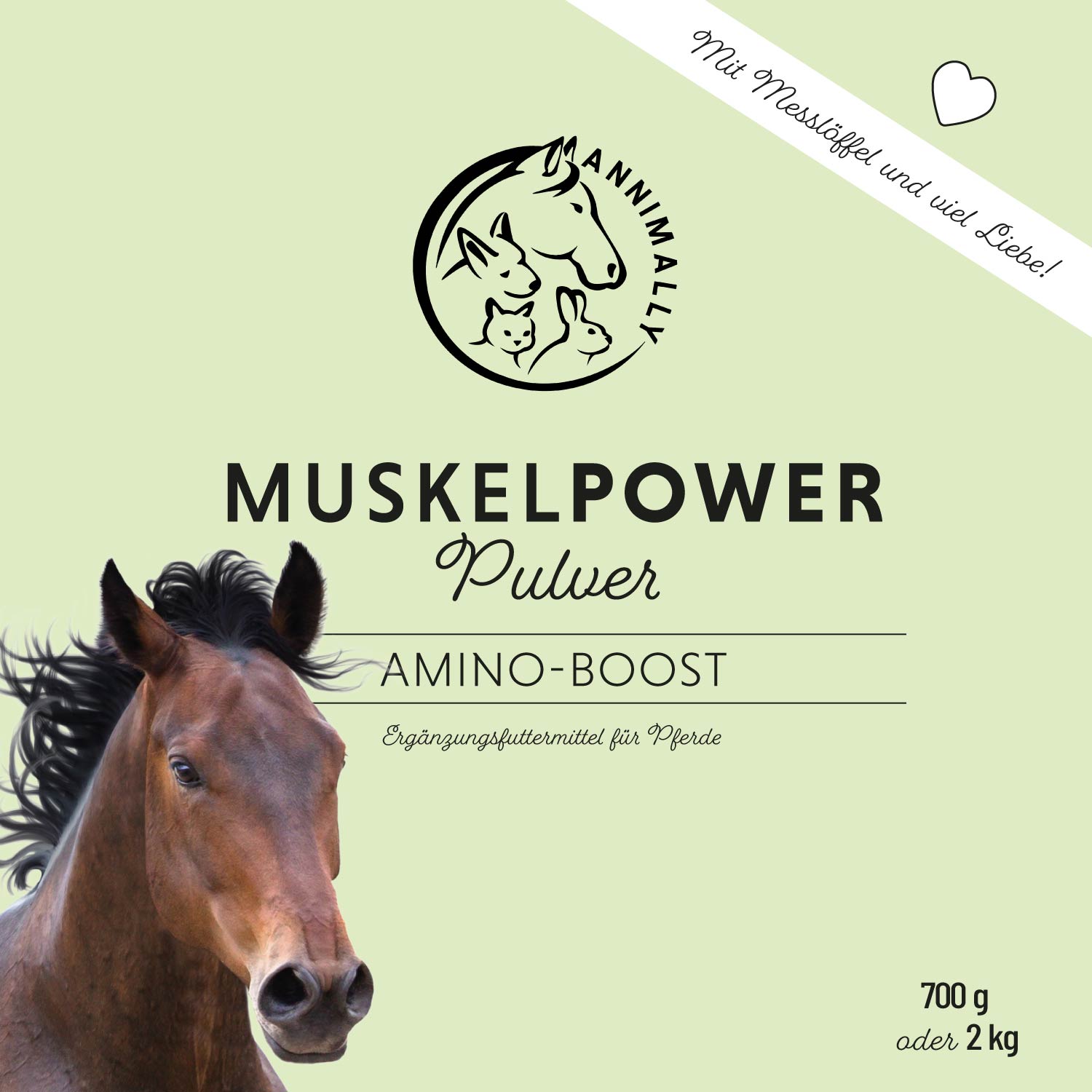
Removing Tartar from Dogs: Comprehensive Guide to Healthy Dog Teeth
Tartar is not just a cosmetic problem for dogs, but can have serious health consequences. Many dog owners are not aware of the importance of dental care for their four-legged friends and underestimate the risks posed by tartar.
Hardened plaque on the teeth can lead to painful gum inflammation, periodontitis, tooth loss and even serious infections that can spread to other organs. Bad breath, discolored teeth and difficulty eating are often the first signs that something is wrong.
In this comprehensive guide, you will learn how tartar forms in dogs, how to recognize it, how to prevent it, and how to treat it effectively. From daily dental care to professional teeth cleaning at the vet - there are many ways to help your dog have healthy teeth. If you act early and provide regular care, you can spare your four-legged friend painful dental problems and significantly improve his quality of life.
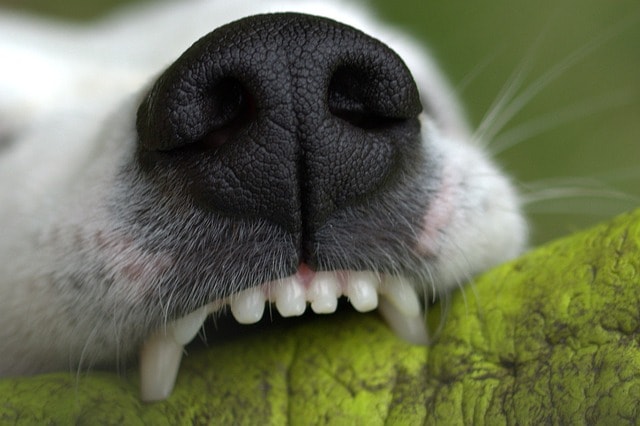
What is tartar?
Tartar in dogs is hardened plaque that builds up on a dog's teeth. It occurs when plaque, a soft layer of saliva, food residue and bacteria, is not removed from the teeth in time. When it comes into contact with the minerals in the saliva, especially calcium, this layer hardens and turns into tartar. You can no longer remove this with a toothbrush; it requires professional intervention by a veterinarian.
How does tartar form in dogs?
The formation of tartar begins with plaque. This soft layer builds up on your dog's teeth and contains bacteria that are created by eating. If plaque is not removed regularly, it mineralizes and hardens into tartar. Once hardened, this coating becomes an ideal breeding ground for even more bacteria, which promotes inflammation in the mouth.
The formation of tartar in dogs is influenced by various factors:
-
Diet : Leftover food that remains in the mouth promotes the growth of bacteria. Wet food in particular tends to get stuck in the gaps between the teeth.
-
Tooth position : Dogs with narrow teeth or misaligned teeth are particularly susceptible because food remains can more easily get stuck between the teeth.
-
Breed : Smaller dog breeds are often more affected by tartar because their teeth are closer together and plaque builds up more quickly.
-
Age : Older dogs are more susceptible to tartar because their metabolism slows down and cleaning with saliva is less effective.
Symptoms: How do you recognize tartar in your dog?
Detecting tartar in dogs is not always easy, as it forms slowly and does not initially cause any acute symptoms. Over time, however, the following symptoms may appear:
-
Bad breath (halitosis) : This is one of the first signs you will notice. Bacteria that multiply in tartar release sulfur compounds that cause the unpleasant smell.
-
Discolored teeth : Tartar has a yellowish-brown color that is noticeable on your dog's teeth, especially on the molars.
-
Gingivitis : Red, swollen or bleeding gums indicate inflammation caused by the pressure of tartar on the gums.
-
Tooth loss : In advanced stages, tartar can damage the gums and bones that support the teeth, causing teeth to become loose or fall out.
-
Loss of appetite or difficulty chewing : Dental problems can make eating uncomfortable for your dog, and he may start to avoid his food or chew more slowly.
Why is tartar dangerous for dogs?
Tartar can cause more than just cosmetic problems for dogs. If left untreated, it can lead to serious health complications. The most common include:
-
Inflammation in the mouth (gingivitis and periodontitis): One of the first problems caused by tartar is gum inflammation, also known as gingivitis. The hardened plaque sticks to the gum line and presses on the surrounding tissue, which can lead to redness, swelling and bleeding. If this inflammation is left untreated, it spreads deeper and can lead to periodontitis. In this more serious disease, the periodontal tissue, i.e. the tissue and jawbone that holds the tooth, is gradually destroyed. This leads not only to pain, but also to loosening and ultimately loss of the affected teeth.
Periodontitis can be particularly painful for dogs and can make eating difficult. In advanced cases, bones and soft tissue can even be irreversibly damaged, requiring surgical treatment.
-
Tooth loss : As periodontitis progresses, the gums are severely attacked. As a result, they lose the ability to hold the teeth firmly. This leads to teeth becoming loose and, in the worst case, falling out.
Not only does such tooth loss affect the dog's ability to eat normally, but it can also lead to further infections as the open areas in the gums are vulnerable to bacteria. The loss of a tooth itself can also be painful for the dog and increase the risk of further dental problems.
-
Pain and discomfort caused by tartar: The inflammation and infection caused by tartar can be extremely painful for your dog. Dogs often show that they are in pain late, so you may not notice that your dog is suffering from toothache for a long time.
However, symptoms such as increased drooling, cautious chewing or avoiding certain foods can be signs that your dog is in pain due to dental problems. Untreated toothache can also affect your dog's behavior, such as making him more irritable or showing less energy.
-
Spread of bacteria in the body: Another serious risk posed by tartar is the spread of bacteria from the mouth to other parts of the body. Chronic inflammation in the mouth can cause bacteria to enter the bloodstream and colonize vital organs such as the heart, kidneys and liver.
The heart valve is particularly susceptible to this, which can lead to what is known as endocarditis - an inflammation of the inner lining of the heart, which can be life-threatening. The liver and kidneys can also be damaged by the constant exposure to the bacteria, which can lead to organ damage or loss of function in the long term.
-
Impairments of general well-being: Aside from the direct health consequences that tartar causes, poor dental health also affects your dog's overall well-being. Dogs suffering from toothache or infection often have less appetite, which can lead to weight loss and nutritional deficiencies. In addition, chronic pain can lead to behavioral changes as the dog becomes more irritable or lethargic due to the discomfort.
Bad breath, caused by the bacteria in tartar, is not only unpleasant, but can also be an indication of more serious oral problems that affect your dog's overall well-being.
-
Long-term health effects of tartar: The untreated buildup of tartar and the resulting inflammation and infections can have a serious impact on your dog's health in the long term. Chronic infections weaken your dog's immune system, making him more susceptible to other diseases. In addition, the risk of heart, liver and kidney disease can reduce your dog's quality of life and life expectancy in the long term. Older dogs or dogs who already suffer from health problems are particularly at risk.
Prevention: How to protect your dog from tartar
The best way to prevent tartar in dogs is prevention. If you incorporate a few simple steps into your dog's daily care, you can counteract dental problems in the long term.
1. Regular brushing of teeth to prevent tartar in dogs
Brushing your dog's teeth is the most effective way to prevent tartar in dogs. Ideally, you should brush your dog's teeth daily. Use special toothbrushes and toothpaste for dogs. The toothpaste should not contain fluoride, as this is toxic for dogs. Dog toothpaste is available in different flavors such as chicken or beef, which makes brushing your dog's teeth more pleasant.
-
Tip: Start getting your dog used to brushing his teeth early, ideally when he is still a puppy. Introduce the toothbrush slowly and reward your dog after brushing so that he perceives the ritual positively.
2. Dental care snacks and chew toys against tartar
There are special dental care snacks and chew toys that help to mechanically remove plaque. When chewing, your dog's teeth are cleaned through abrasion, which reduces the risk of tartar buildup and reduces plaque. Dental care snacks are available in most pet stores and are an ideal addition to brushing teeth.
-
Chew toys to combat tartar : Special toys such as rubber bands or rope knots can also help clean your dog's teeth and massage the gums.

3. Regular check-ups with the veterinarian
Even if you take care of your dog's teeth regularly, you should take him to the vet for a dental check-up at least once a year. Regular check-ups are particularly important for older dogs or breeds that are prone to dental problems in order to detect and treat problems early.
Removing tartar from your dog yourself: Is it possible?
Many dog owners ask themselves whether they can remove tartar themselves. While there are special tartar removers for dogs on the market, this is not recommended. Removing tartar from dogs requires precision and experience, as you can easily injure your dog's gums or tooth enamel.
In addition, you can only remove tartar from the visible areas. You cannot reach plaque and tartar that are located under the gum line, which increases the risk of gingivitis.
Removing tartar through professional dental cleaning at the veterinarian
The safest and most effective way to remove tartar is to have your dog professionally cleaned by a vet. Tartar removal is usually done under general anesthesia so that the dog remains calm and the vet can work thoroughly. Ultrasound devices and special instruments are used to remove tartar, clean the gums and polish the teeth.
-
Costs : The cost of professional tartar removal varies depending on the extent of the procedure, the anesthesia and any additional treatments. On average, the cost is between 60 and 190 euros, depending on the region and the condition of the dog's teeth.
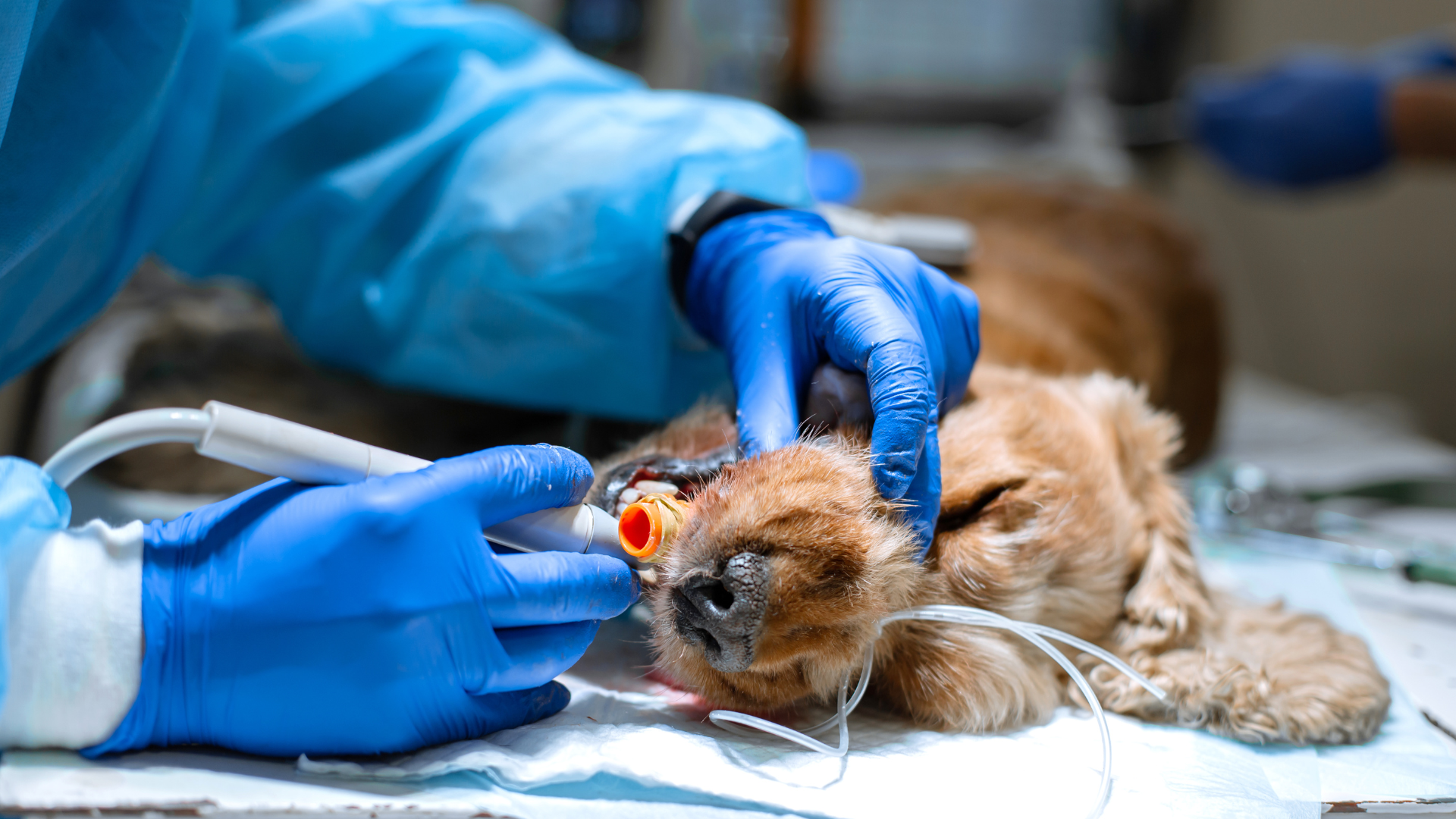
Home remedies for tartar: What's the truth?
There are many home remedies circulating on the Internet that are supposed to help remove tartar from dogs. Coconut oil, apple cider vinegar or baking soda are often mentioned, but their effectiveness has not been proven and in some cases can even be harmful.
Coconut oil, for example, may have antibacterial properties, but it cannot dissolve hardened tartar in dogs. You should also avoid aggressive substances such as baking soda, as they can attack your dog's tooth enamel.
Conclusion: Tartar in dogs – prevention and treatment
Tartar in dogs is a common but preventable problem. With consistent dental care and the right measures, you can significantly support your dog's dental health and avoid serious complications.
The most important step in prevention is daily brushing, which, in combination with dental care snacks and special chew toys, effectively removes plaque before it can harden. An adapted diet that promotes mechanical cleaning through dry food also helps to reduce tartar.
Despite all precautions, it is still important to schedule regular check-ups with the vet to have your dog's teeth checked. Tartar that has already formed can only be removed by a professional dental cleaning. Such cleaning is not only important for cosmetic reasons, but also for your dog's general well-being. Tartar can cause inflammation, pain and even tooth loss, and in advanced cases can also damage other organs.
Through consistent care and regular checkups, you can help your dog live a pain-free, healthy life. Good dental hygiene is key to minimizing tartar buildup and promoting your dog's overall health.
A brief overview of the most important points for preventing tartar formation in dogs:
Brushing your teeth daily : The most important step in prevention, especially to keep the spaces between your teeth clean.
Dental care snacks and chew toys : Help to mechanically remove plaque.
Regular veterinary visits : At least once a year for a check-up.
Adjust diet : High-quality food and snacks contribute to dental health.
